My
List |
Addition Date
|
Target
|
Mission
|
Instrument
|
Size
|

|
2024-05-09 |
|
Spitzer Space Telescope
|
Spitzer Space Telescope
|
16151x6971x3 |

|
-
PIA26276:
-
The Infrared Face of the Andromeda Galaxy
Full Resolution:
TIFF
(185.7 MB)
JPEG
(11.39 MB)
|

|
2021-10-25 |
|
Spitzer Space Telescope
|
Spitzer Space Telescope
|
3542x3542x3 |
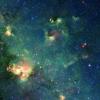
|
-
PIA24579:
-
Godzilla Nebula Imaged by Spitzer
Full Resolution:
TIFF
(37.65 MB)
JPEG
(2.228 MB)
|

|
2020-04-17 |
|
Spitzer Space Telescope
|
Spitzer Space Telescope
|
3317x1902x3 |
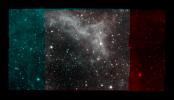
|
-
PIA23650:
-
Spitzer California Nebula Mosaic
Full Resolution:
TIFF
(12.09 MB)
JPEG
(759 kB)
|

|
2020-01-27 |
|
Spitzer Space Telescope
|
Spitzer Space Telescope
|
8832x4968x3 |
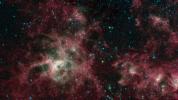
|
-
PIA23647:
-
Tarantula Nebula Spitzer 3-Color Image
Full Resolution:
TIFF
(126.6 MB)
JPEG
(4.053 MB)
|

|
2020-01-27 |
|
Spitzer Space Telescope
|
Spitzer Space Telescope
|
8832x4968x3 |
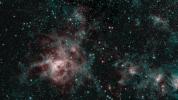
|
-
PIA23646:
-
Tarantula Nebula Spitzer 2-Color Image
Full Resolution:
TIFF
(112.2 MB)
JPEG
(5.08 MB)
|

|
2019-12-19 |
|
Spitzer Space Telescope
|
Spitzer Space Telescope
|
15950x6500x3 |
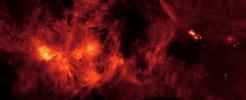
|
-
PIA23405:
-
Perseus Molecular Cloud
Full Resolution:
TIFF
(178.3 MB)
JPEG
(7.177 MB)
|

|
2019-09-30 |
|
Spitzer Space Telescope
|
Spitzer Space Telescope
|
3250x3250x3 |
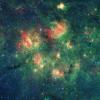
|
-
PIA23402:
-
Spitzer Spots Bubbles and Bow Shocks
Full Resolution:
TIFF
(31.7 MB)
JPEG
(1.693 MB)
|

|
2019-08-19 |
|
Spitzer Space Telescope
|
|
3840x2160x3 |
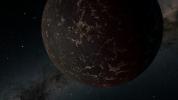
|
-
PIA23130:
-
Rare Glimpse of the Surface of a Rocky World (Illustration)
Full Resolution:
TIFF
(13.84 MB)
JPEG
(473.9 kB)
|

|
2019-07-31 |
|
Spitzer Space Telescope
|
IRAC
|
1200x1200x3 |
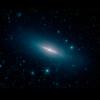
|
-
PIA23129:
-
NASA's Spitzer Spots a Perfectly Sideways Galaxy
Full Resolution:
TIFF
(2.072 MB)
JPEG
(59.86 kB)
|

|
2019-04-25 |
Messier 87
|
Spitzer Space Telescope
|
Spitzer Space Telescope
|
3226x1814x3 |

|
-
PIA23122:
-
Spitzer Captures Messier 87
Full Resolution:
TIFF
(11.32 MB)
JPEG
(324.5 kB)
|

|
2019-01-07 |
|
Kepler
Spitzer Space Telescope
|
|
9019x5068x3 |
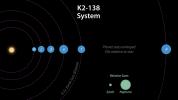
|
-
PIA23003:
-
K2-138 System Diagram
Full Resolution:
TIFF
(5.129 MB)
JPEG
(1.072 MB)
|

|
2018-10-23 |
|
Spitzer Space Telescope
|
IRAC
|
5000x1848x3 |
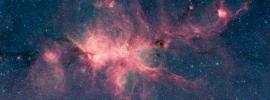
|
-
PIA22567:
-
Cat's Paw Image 2
Full Resolution:
TIFF
(27.74 MB)
JPEG
(1.843 MB)
|

|
2018-10-23 |
|
Spitzer Space Telescope
|
IRAC
|
5000x1848x3 |
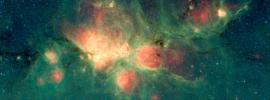
|
-
PIA22568:
-
Cat's Paw Image 1
Full Resolution:
TIFF
(27.74 MB)
JPEG
(1.447 MB)
|

|
2018-02-05 |
|
Spitzer Space Telescope
|
TRAPPIST
|
1068x600x3 |
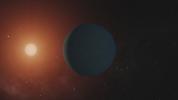
|
-
PIA22098:
-
TRAPPIST-1 Planet Animations
Full Resolution:
TIFF
(984.6 kB)
JPEG
(20.48 kB)
|

|
2018-02-05 |
|
Spitzer Space Telescope
|
TRAPPIST
|
5120x2880x3 |
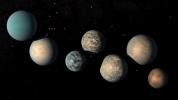
|
-
PIA22097:
-
Illustration of TRAPPIST-1 Planets as of Feb. 2018
Full Resolution:
TIFF
(13.41 MB)
JPEG
(606.5 kB)
|

|
2018-02-05 |
|
Spitzer Space Telescope
|
TRAPPIST
|
4500x3600x3 |
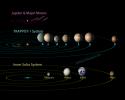
|
-
PIA22096:
-
TRAPPIST-1 Compared to Jovian Moons and Inner Solar System - Updated Feb. 2018
Full Resolution:
TIFF
(3.656 MB)
JPEG
(650.3 kB)
|

|
2018-02-05 |
|
Spitzer Space Telescope
|
TRAPPIST
|
4800x2700x3 |
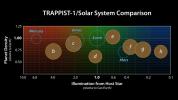
|
-
PIA22095:
-
Comparing TRAPPIST-1 to the Solar System
Full Resolution:
TIFF
(4.411 MB)
JPEG
(591.6 kB)
|

|
2018-02-05 |
|
Spitzer Space Telescope
|
TRAPPIST
|
6000x3500x3 |
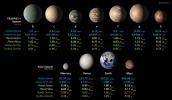
|
-
PIA22094:
-
TRAPPIST-1 Planet Lineup - Updated Feb. 2018
Full Resolution:
TIFF
(9.101 MB)
JPEG
(1.133 MB)
|

|
2017-11-16 |
|
Spitzer Space Telescope
|
|
4800x2700x3 |
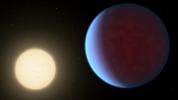
|
-
PIA22069:
-
55 Cancri e with Atmosphere (Artist's Concept)
Full Resolution:
TIFF
(22.07 MB)
JPEG
(374.4 kB)
|

|
2017-10-16 |
NGC 4993
|
Spitzer Space Telescope
|
IRAC
|
2048x718x3 |
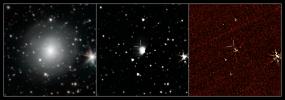
|
-
PIA21910:
-
Spitzer Observes Neutron Star Collision
Full Resolution:
TIFF
(2.454 MB)
JPEG
(135.4 kB)
|

|
2017-08-11 |
|
Spitzer Space Telescope
|
TRAPPIST
|
1600x900x3 |

|
-
PIA21751:
-
TRAPPIST-1 System - Artist Concept
Full Resolution:
TIFF
(2.582 MB)
JPEG
(60 kB)
|

|
2017-05-10 |
|
Hubble Space Telescope
XMM-Newton
Chandra X-ray Observatory
Spitzer Space Telescope
|
Very Large Array (VLA)
|
1296x1024x3 |
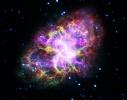
|
-
PIA21474:
-
Crab Nebula from Five Observatories
Full Resolution:
TIFF
(2.823 MB)
JPEG
(119.2 kB)
|

|
2017-04-26 |
|
Spitzer Space Telescope
|
|
4534x2550x3 |
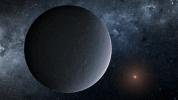
|
-
PIA21430:
-
Iceball Planet Artist's Concept
Full Resolution:
TIFF
(24.47 MB)
JPEG
(1.854 MB)
|

|
2017-02-22 |
|
Spitzer Space Telescope
|
TRAPPIST
|
3600x4500x3 |

|
-
PIA21429:
-
Transit Illustration of TRAPPIST-1
Full Resolution:
TIFF
(26.82 MB)
JPEG
(535.5 kB)
|

|
2017-02-22 |
|
Spitzer Space Telescope
|
TRAPPIST
|
4500x3600x3 |
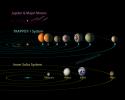
|
-
PIA21428:
-
TRAPPIST-1 Comparison to Solar System and Jovian Moons
Full Resolution:
TIFF
(3.612 MB)
JPEG
(646.9 kB)
|

|
2017-02-22 |
|
Spitzer Space Telescope
|
TRAPPIST
|
5104x2871x3 |
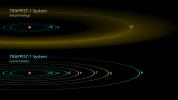
|
-
PIA21426:
-
The Discovery of TRAPPIST-1 Planets
Full Resolution:
TIFF
(3.828 MB)
JPEG
(491 kB)
|

|
2017-02-22 |
|
Spitzer Space Telescope
|
TRAPPIST
|
6000x3375x3 |
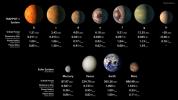
|
-
PIA21425:
-
TRAPPIST-1 Statistics Table
Full Resolution:
TIFF
(9.099 MB)
JPEG
(932.9 kB)
|

|
2017-02-22 |
|
Spitzer Space Telescope
|
TRAPPIST
|
5295x2978x3 |
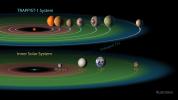
|
-
PIA21424:
-
The TRAPPIST-1 Habitable Zone
Full Resolution:
TIFF
(10.46 MB)
JPEG
(624.5 kB)
|

|
2017-02-22 |
|
Spitzer Space Telescope
|
TRAPPIST
|
4534x2550x3 |
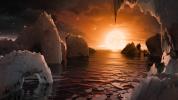
|
-
PIA21423:
-
Surface of TRAPPIST-1f
Full Resolution:
TIFF
(27.53 MB)
JPEG
(1.016 MB)
|

|
2017-02-22 |
|
Spitzer Space Telescope
|
TRAPPIST
|
6000x3000x3 |
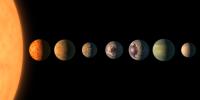
|
-
PIA21422:
-
TRAPPIST-1 Planet Lineup
Full Resolution:
TIFF
(11.88 MB)
JPEG
(487.1 kB)
|

|
2017-02-22 |
|
Spitzer Space Telescope
|
TRAPPIST
|
3200x4000x3 |

|
-
PIA21421:
-
Abstract Concept of TRAPPIST-1 System
Full Resolution:
TIFF
(13.91 MB)
JPEG
(422.5 kB)
|

|
2016-11-10 |
OGLE-2015-BLG-1319
|
Spitzer Space Telescope
SWIFT
|
|
4800x2700x3 |
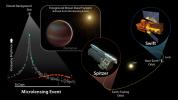
|
-
PIA21077:
-
Brown Dwarf Microlensing Diagram
Full Resolution:
TIFF
(8.39 MB)
JPEG
(652.2 kB)
|

|
2016-11-10 |
OGLE-2015-BLG-1319
|
Spitzer Space Telescope
SWIFT
|
|
4800x2700x3 |
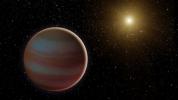
|
-
PIA21076:
-
Brown Dwarf Microlensing (Illustration)
Full Resolution:
TIFF
(18.01 MB)
JPEG
(460.3 kB)
|

|
2016-08-25 |
|
Spitzer Space Telescope
|
|
4533x2550x3 |
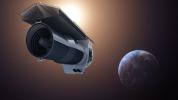
|
-
PIA20913:
-
Spitzer Beyond (Artist's Concept)
Full Resolution:
TIFF
(17.43 MB)
JPEG
(442.8 kB)
|

|
2016-04-26 |
|
Spitzer Space Telescope
|
|
3840x2160x3 |
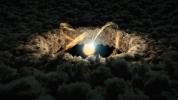
|
-
PIA20645:
-
Protoplanetary Disk (Artist's Concept)
Full Resolution:
TIFF
(13.92 MB)
JPEG
(629.5 kB)
|

|
2016-03-30 |
|
Spitzer Space Telescope
|
|
3840x2160x3 |
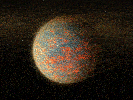
|
-
PIA20068:
-
Hot-Lava World Illustration

Full Resolution:
TIFF
(14.58 MB)
JPEG
(477 kB)
|

|
2016-03-28 |
|
Spitzer Space Telescope
|
|
2550x2550x3 |
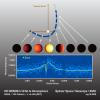
|
-
PIA20067:
-
HD 80606b Light Curve
Full Resolution:
TIFF
(1.47 MB)
JPEG
(354.4 kB)
|

|
2016-01-07 |
|
Chandra X-ray Observatory
Herschel Space Observatory
Spitzer Space Telescope
|
Chandra X-ray Telescope
IRAC
|
1719x1718x3 |
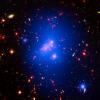
|
-
PIA20063:
-
Galaxy Cluster IDCS J1426
Full Resolution:
TIFF
(7.301 MB)
JPEG
(258.9 kB)
|

|
2015-12-14 |
|
Hubble Space Telescope
Spitzer Space Telescope
|
|
6000x3663x3 |
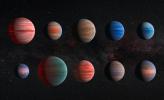
|
-
PIA20056:
-
Artist's Impression of "Hot Jupiter" Exoplanets
Full Resolution:
TIFF
(47.71 MB)
JPEG
(3.259 MB)
|

|
2015-08-20 |
|
Spitzer Space Telescope
|
Spitzer Space Telescope
|
4800x2700x3 |
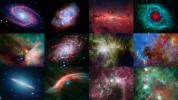
|
-
PIA19872:
-
NASA's Spitzer 12th Anniversary Space Calendar
Full Resolution:
TIFF
(38.9 MB)
JPEG
(1.945 MB)
|

|
2015-07-30 |
|
Spitzer Space Telescope
|
|
4800x2700x3 |
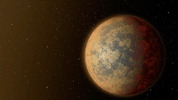
|
-
PIA19833:
-
Hot, Rocky World (Artist's Concept)

Full Resolution:
TIFF
(38.9 MB)
JPEG
(834.4 kB)
|

|
2015-07-30 |
|
Spitzer Space Telescope
|
|
3200x1799x3 |
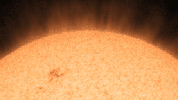
|
-
PIA19831:
-
Little Black Spot on the Star Today (Artist's Concept)

Full Resolution:
TIFF
(17.28 MB)
JPEG
(295.3 kB)
|

|
2015-06-25 |
|
Spitzer Space Telescope
|
|
4800x2700x3 |
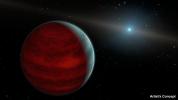
|
-
PIA19346:
-
Hypothetical 'Rejuvenated' Planets (Artist's Concept)
Full Resolution:
TIFF
(38.9 MB)
JPEG
(507.7 kB)
|

|
2015-04-14 |
|
Spitzer Space Telescope
|
|
3556x2000x3 |
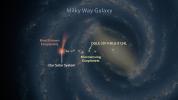
|
-
PIA19333:
-
Map of Exoplanets Found in Our Galaxy (Artist's Concept)
Full Resolution:
TIFF
(21.34 MB)
JPEG
(500.1 kB)
|

|
2014-11-10 |
|
Spitzer Space Telescope
|
Spitzer Space Telescope
|
3300x4000x3 |

|
-
PIA18900:
-
Sibling Star Systems? Dust Structures Suggest So
Full Resolution:
TIFF
(39.62 MB)
JPEG
(590.8 kB)
|

|
2014-09-24 |
|
Hubble Space Telescope
Spitzer Space Telescope
|
|
4124x2320x3 |

|
-
PIA18837:
-
Seeing Starlight Through a Planet's Rim (Artist's Concept)
Full Resolution:
TIFF
(28.72 MB)
JPEG
(324.8 kB)
|

|
2014-08-28 |
|
Spitzer Space Telescope
|
|
3800x2138x3 |
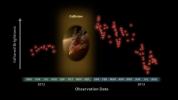
|
-
PIA18470:
-
Witnessing a Planetary Wreckage
Full Resolution:
TIFF
(24.38 MB)
JPEG
(260.9 kB)
|

|
2014-08-28 |
|
Spitzer Space Telescope
|
|
4005x2253x3 |
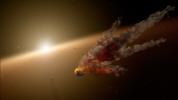
|
-
PIA18469:
-
Building Planets Through Collisions (Artist's Concept)
Full Resolution:
TIFF
(27.08 MB)
JPEG
(415.7 kB)
|

|
2014-08-21 |
|
Chandra X-ray Observatory
Spitzer Space Telescope
XMM-Newton
|
MIPS
XMM-Newton X-ray
|
2051x1591x3 |

|
-
PIA18468:
-
Supernova Seen In Two Lights
Full Resolution:
TIFF
(9.794 MB)
JPEG
(189.6 kB)
|

|
2014-07-23 |
|
Kepler
Spitzer Space Telescope
|
|
3300x2400x3 |
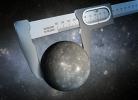
|
-
PIA18463:
-
Gauging an Alien World's Size (Artist Concept)
Full Resolution:
TIFF
(23.77 MB)
JPEG
(993.3 kB)
|

|
2014-07-02 |
|
Chandra X-ray Observatory
Hubble Space Telescope
Spitzer Space Telescope
Very Large Array (VLA)
|
|
3600x2812x3 |
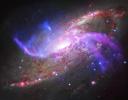
|
-
PIA18461:
-
Galactic Pyrotechnics on Display
Full Resolution:
TIFF
(30.38 MB)
JPEG
(1.396 MB)
|

|
2014-06-04 |
|
Spitzer Space Telescope
|
IRAC
|
986x1135x3 |

|
-
PIA18009:
-
Dissecting Dust from Detonation of Dead Star
Full Resolution:
TIFF
(3.359 MB)
JPEG
(103.6 kB)
|

|
2014-05-07 |
|
Chandra X-ray Observatory
Spitzer Space Telescope
|
|
3600x3600x3 |
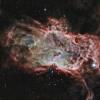
|
-
PIA18249:
-
Inside the Flame Nebula
Full Resolution:
TIFF
(38.89 MB)
JPEG
(874.9 kB)
|

|
2013-12-18 |
|
Spitzer Space Telescope
|
IRAC
|
2000x2000x3 |
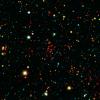
|
-
PIA17565:
-
Galactic Metropolis
Full Resolution:
TIFF
(12 MB)
JPEG
(435.8 kB)
|

|
2013-11-21 |
|
Spitzer Space Telescope
Hubble Space Telescope
Subaru Telescope
|
IRAC
|
960x960x3 |

|
-
PIA17558:
-
Three-headed Galactic Blob
Full Resolution:
TIFF
(2.766 MB)
JPEG
(33.67 kB)
|

|
2013-10-28 |
|
Spitzer Space Telescope
|
IRAC
|
3600x2023x3 |
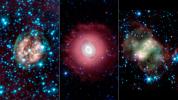
|
-
PIA17552:
-
Death Beckons Three Aging Stars
Full Resolution:
TIFF
(21.86 MB)
JPEG
(480 kB)
|

|
2013-08-01 |
|
Spitzer Space Telescope
Wide-field Infrared Survey Explorer (WISE)
|
IRAC
|
2400x1200x3 |
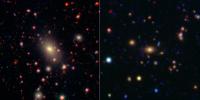
|
-
PIA17253:
-
Monster in the Middle: Brightest Cluster Galaxy
Full Resolution:
TIFF
(8.643 MB)
JPEG
(226 kB)
|

|
2013-07-23 |
ISON
|
Spitzer Space Telescope
|
IRAC
|
1210x788x3 |
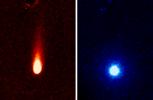
|
-
PIA17251:
-
Spitzer Eyes Comet ISON
Full Resolution:
TIFF
(2.862 MB)
JPEG
(60.64 kB)
|

|
2013-05-24 |
|
Spitzer Space Telescope
|
IRAC
|
960x960x3 |
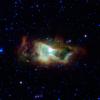
|
-
PIA17015:
-
Infrared Iris
Full Resolution:
TIFF
(2.766 MB)
JPEG
(58.18 kB)
|

|
2012-12-13 |
|
Chandra X-ray Observatory
Hubble Space Telescope
Spitzer Space Telescope
Very Large Space Telescope (VLT)
|
|
3600x3600x3 |
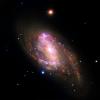
|
-
PIA15806:
-
NGC 3627: Revealing Hidden Black Holes
Full Resolution:
TIFF
(38.89 MB)
JPEG
(646 kB)
|

|
2012-11-07 |
|
Chandra X-ray Observatory
Isaac Newton Telescope
Spitzer Space Telescope
|
|
3600x3600x3 |
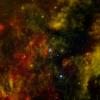
|
-
PIA16438:
-
A Nearby Stellar Cradle
Full Resolution:
TIFF
(20.2 MB)
JPEG
(1.678 MB)
|

|
2012-10-03 |
|
Galaxy Evolution Explorer (GALEX)
Spitzer Space Telescope
|
IRAC
Ultraviolet/Visible Camera
|
6019x6019x3 |
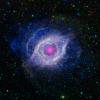
|
-
PIA15817:
-
The Helix Nebula: Unraveling at the Seams
Full Resolution:
TIFF
(108.7 MB)
JPEG
(3.087 MB)
|

|
2012-08-15 |
Messier 100
|
Spitzer Space Telescope
|
IRAC
MIPS
|
1016x1016x3 |
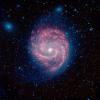
|
-
PIA15910:
-
The Swirling Arms of the M100 Galaxy
Full Resolution:
TIFF
(2.503 MB)
JPEG
(150.8 kB)
|

|
2012-08-15 |
Messier 100
|
Spitzer Space Telescope
|
IRAC
MIPS
|
1016x1016x3 |

|
-
PIA15909:
-
Hot and Cold in the M100 Galaxy
Full Resolution:
TIFF
(2.12 MB)
JPEG
(148.6 kB)
|

|
2012-07-18 |
|
Spitzer Space Telescope
|
|
5120x2880x3 |
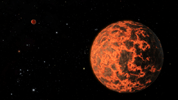
|
-
PIA15808:
-
Exoplanet is Extremely Hot and Incredibly Close (Artist's Concept)

Full Resolution:
TIFF
(44.26 MB)
JPEG
(821.4 kB)
|

|
2012-05-23 |
|
Spitzer Space Telescope
|
|
2299x2299x3 |
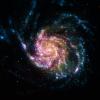
|
-
PIA15630:
-
Pinwheel Galaxy Rainbow
Full Resolution:
TIFF
(15.87 MB)
JPEG
(422.2 kB)
|

|
2012-05-08 |
|
Spitzer Space Telescope
|
|
3600x2100x3 |
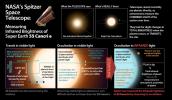
|
-
PIA15624:
-
Measuring Brightness of Super Earth 55 Cancri e
Full Resolution:
TIFF
(22.68 MB)
JPEG
(708.5 kB)
|

|
2012-05-08 |
|
Spitzer Space Telescope
|
|
1916x1076x3 |
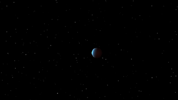
|
-
PIA15623:
-
Super Earth Reveals Itself to Spitzer (Artist Animation)

Full Resolution:
TIFF
(6.194 MB)
JPEG
(42.26 kB)
|

|
2012-05-08 |
|
Spitzer Space Telescope
|
|
3000x2400x3 |
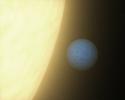
|
-
PIA15622:
-
First-of-Its-Kind Glimpse at a Super Earth (Artist Animation)
Full Resolution:
TIFF
(21.6 MB)
JPEG
(164 kB)
|

|
2012-05-08 |
|
Spitzer Space Telescope
|
IRAC
|
3000x2400x3 |
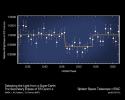
|
-
PIA15621:
-
Magician of a Planet Disappears to Reveal Itself
Full Resolution:
TIFF
(21.6 MB)
JPEG
(332.6 kB)
|

|
2012-02-29 |
|
Herschel Space Observatory
Spitzer Space Telescope
|
Herschel Telescope
IRAC
|
2800x2880x3 |

|
-
PIA13959:
-
Orion's Rainbow of Infrared Light
Full Resolution:
TIFF
(24.19 MB)
JPEG
(321.2 kB)
|

|
2012-02-22 |
|
Spitzer Space Telescope
|
|
4268x2400x3 |
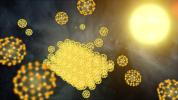
|
-
PIA15266:
-
Building a Buckyball Particle in Space (Artist Concept)
Full Resolution:
TIFF
(30.73 MB)
JPEG
(699.1 kB)
|

|
2011-10-19 |
|
Spitzer Space Telescope
|
|
4267x2400x3 |
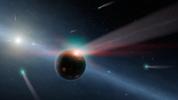
|
-
PIA14739:
-
It's Raining Comets (Artist's Concept)
Full Resolution:
TIFF
(30.72 MB)
JPEG
(328.2 kB)
|

|
2011-09-28 |
NGC 281
|
Chandra X-ray Observatory
Spitzer Space Telescope
|
Chandra X-ray Telescope
IRAC
|
3600x2719x3 |
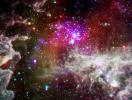
|
-
PIA14731:
-
The 'Pacman Nebula'
Full Resolution:
TIFF
(29.37 MB)
JPEG
(797.6 kB)
|

|
2011-08-15 |
|
Spitzer Space Telescope
|
|
1200x847x3 |
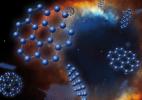
|
-
PIA14548:
-
Graphene in Space (Artist's Concept)
Full Resolution:
TIFF
(3.053 MB)
JPEG
(78.04 kB)
|

|
2011-08-01 |
|
Herschel Space Observatory
Spitzer Space Telescope
|
HIFI
IRAC
|
3000x2400x3 |
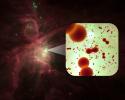
|
-
PIA14406:
-
Oxygen No Longer Lost in Space
Full Resolution:
TIFF
(21.6 MB)
JPEG
(276.5 kB)
|

|
2011-04-04 |
|
Spitzer Space Telescope
|
IRAC
|
2048x2048x3 |
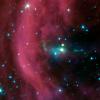
|
-
PIA13930:
-
It's Twins! Spitzer Finds Hidden Jet
Full Resolution:
TIFF
(12.6 MB)
JPEG
(185.4 kB)
|

|
2011-04-04 |
|
Spitzer Space Telescope
|
IRAC
Visible Light
|
2829x1401x3 |
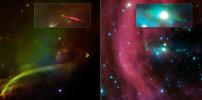
|
-
PIA13929:
-
Undercover Jet Exposed
Full Resolution:
TIFF
(11.89 MB)
JPEG
(182.4 kB)
|

|
2011-03-18 |
|
Spitzer Space Telescope
|
IRAC
MIPS
|
16000x9000x3 |
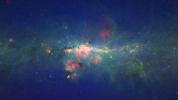
|
-
PIA13932:
-
Stars Gather in 'Downtown' Milky Way
Full Resolution:
TIFF
(432 MB)
JPEG
(24.43 MB)
|

|
2010-12-08 |
|
Spitzer Space Telescope
|
|
3200x2400x3 |
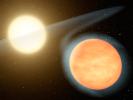
|
-
PIA13691:
-
Hot, Carbon-Rich Planet (Artist Concept)
Full Resolution:
TIFF
(23.04 MB)
JPEG
(276.4 kB)
|

|
2010-10-19 |
|
Spitzer Space Telescope
|
|
3000x2073x3 |
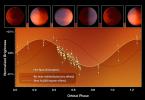
|
-
PIA13495:
-
How to Find a Planetary Hot Spot
Full Resolution:
TIFF
(18.66 MB)
JPEG
(325.8 kB)
|

|
2010-10-19 |
|
Spitzer Space Telescope
|
|
1281x720x3 |
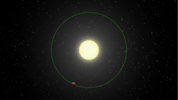
|
-
PIA13494:
-
Weird Warm Spot on Exoplanet

Full Resolution:
TIFF
(2.77 MB)
JPEG
(40.2 kB)
|

|
2010-08-23 |
|
Spitzer Space Telescope
|
IRAC
|
3000x2400x3 |
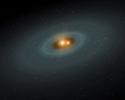
|
-
PIA13346:
-
Circle of Planetary Ashes (Artist's Concept)
Full Resolution:
TIFF
(21.6 MB)
JPEG
(395.3 kB)
|

|
2010-08-05 |
|
Spitzer Space Telescope
|
IRAC
|
3545x3600x3 |

|
-
PIA13316:
-
NASA's Great Observatories Witness a Galactic Spectacle
Full Resolution:
TIFF
(38.29 MB)
JPEG
(755.9 kB)
|

|
2010-07-28 |
|
Spitzer Space Telescope
|
IRAC
|
3000x3000x3 |
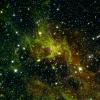
|
-
PIA13304:
-
Awash in Green and Red
Full Resolution:
TIFF
(27 MB)
JPEG
(1.548 MB)
|

|
2010-07-28 |
|
Spitzer Space Telescope
|
IRAC
|
6000x6000x3 |
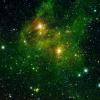
|
-
PIA13301:
-
Bright Lights, Green City
Full Resolution:
TIFF
(108 MB)
JPEG
(6.345 MB)
|

|
2010-04-21 |
|
Spitzer Space Telescope
|
|
3300x2550x3 |
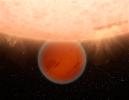
|
-
PIA13054:
-
Exotic Exoplanet (Artist's Concept)
Full Resolution:
TIFF
(25.25 MB)
JPEG
(331.7 kB)
|

|
2009-11-04 |
HR 8799
|
Spitzer Space Telescope
|
MIPS
|
1100x1100x3 |
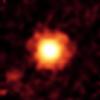
|
-
PIA12336:
-
A Picture of Unsettled Planetary Youth
Full Resolution:
TIFF
(1.213 MB)
JPEG
(40.46 kB)
|

|
2009-10-07 |
|
Hubble Space Telescope
Spitzer Space Telescope
|
IRAC
|
387x727x3 |

|
-
PIA12259:
-
Infrared Ring around Saturn
Full Resolution:
TIFF
(845.1 kB)
JPEG
(50.56 kB)
|

|
2009-10-07 |
|
Spitzer Space Telescope
|
|
3000x2400x3 |
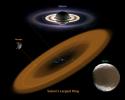
|
-
PIA12256:
-
The King of Rings (Artist Concept)
Full Resolution:
TIFF
(21.6 MB)
JPEG
(268.1 kB)
|

|
2009-09-23 |
|
Spitzer Space Telescope
|
|
3000x2400x3 |
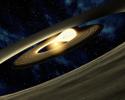
|
-
PIA12210:
-
Lump of Planetary Stuff (Artist Concept)
Full Resolution:
TIFF
(21.6 MB)
JPEG
(490 kB)
|

|
2009-08-12 |
Cepheus B
|
Chandra X-ray Observatory
Spitzer Space Telescope
|
Chandra X-ray Telescope
IRAC
|
2749x3600x3 |

|
-
PIA12169:
-
Trigger-Happy Cloud
Full Resolution:
TIFF
(29.69 MB)
JPEG
(402.1 kB)
|

|
2009-08-10 |
HD 172555
|
Spitzer Space Telescope
|
|
3000x2400x3 |
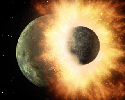
|
-
PIA12166:
-
Planetary Demolition Derby (Artist Concept)

Full Resolution:
TIFF
(21.6 MB)
JPEG
(362.1 kB)
|

|
2009-04-30 |
|
Spitzer Space Telescope
|
IRAC
|
1750x940x3 |
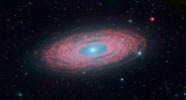
|
-
PIA12001:
-
Why Are Galaxies So Smooth?
Full Resolution:
TIFF
(4.943 MB)
JPEG
(117.7 kB)
|

|
2009-04-07 |
|
Spitzer Space Telescope
|
|
3000x2400x3 |

|
-
PIA11980:
-
Chemical Soups Around Cool Stars (Artist Concept)
Full Resolution:
TIFF
(21.6 MB)
JPEG
(519.4 kB)
|

|
2009-01-28 |
|
Spitzer Space Telescope
|
IRAC
|
638x477x3 |
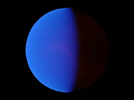
|
-
PIA11392:
-
Tour of Planet with Extreme Temperature Swings

Full Resolution:
TIFF
(914.2 kB)
JPEG
(9.75 kB)
|

|
2009-01-28 |
|
Spitzer Space Telescope
|
IRAC
|
3000x2400x3 |
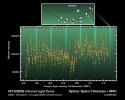
|
-
PIA11390:
-
Light from Red-Hot Planet
Full Resolution:
TIFF
(21.6 MB)
JPEG
(506.4 kB)
|

|
2009-01-05 |
GD 40
|
Spitzer Space Telescope
|
|
3000x2400x3 |
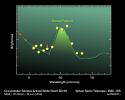
|
-
PIA11736:
-
Silicates in Alien Asteroids
Full Resolution:
TIFF
(21.6 MB)
JPEG
(278.5 kB)
|

|
2009-01-05 |
|
Spitzer Space Telescope
|
|
3000x2400x3 |
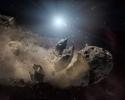
|
-
PIA11735:
-
Asteroid 'Bites the Dust' Around Dead Star (Artist Concept)
Full Resolution:
TIFF
(21.6 MB)
JPEG
(430 kB)
|

|
2008-12-16 |
|
Spitzer Space Telescope
|
IRAC
MIPS
|
1500x1500x3 |
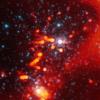
|
-
PIA11726:
-
Devastated Stellar Neighborhood
Full Resolution:
TIFF
(6.762 MB)
JPEG
(130.6 kB)
|

 Planetary Data System
Planetary Data System



















































































































